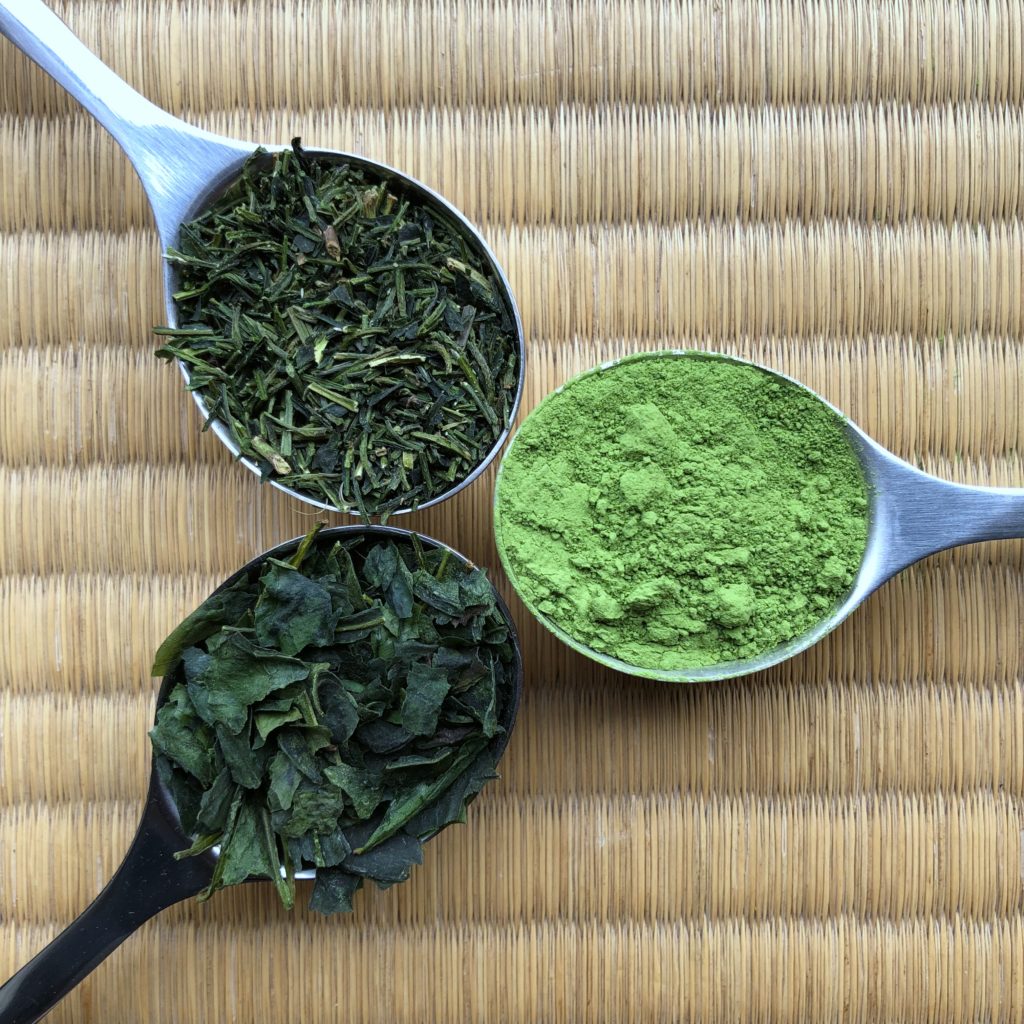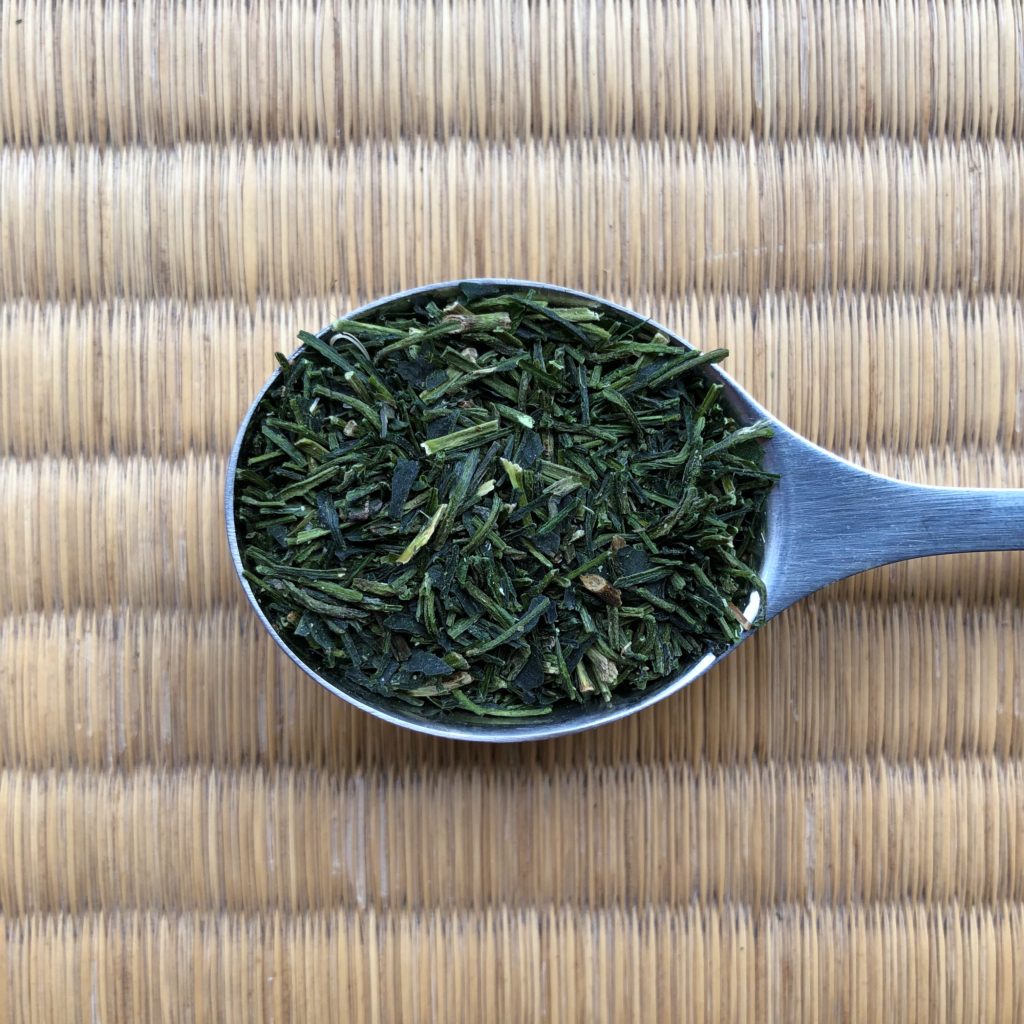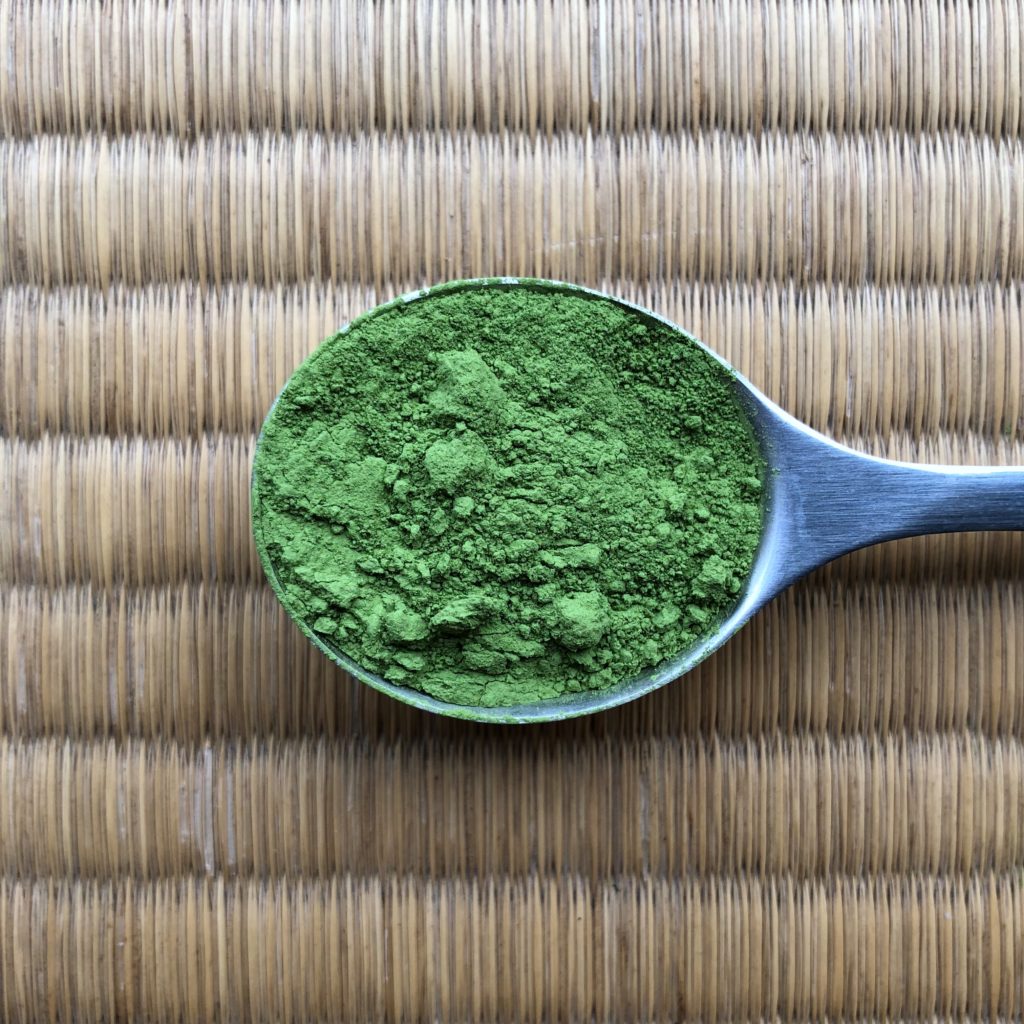Teas Provided by Kyoto Obubu Tea Farms

For the last two weeks, I have talked about matcha tea ceremonies, matcha tea utensils, and now it is finally time to talk about matcha itself! In this post, I want to break down how the tea is made.
First and foremost, to create a baseline, it is important to first explain aracha and shiaecha. ‘Aracha’ is a term used to refer to Japanese teas that have gone through the primary stage of processing. It is also known as ‘farmer’s tea’ or crude tea.
The primary process generally contains three main steps: steaming, drying, and rolling. The tea is not sorted or blended and therefore includes parts of the leaf, stems, and fanning. The focus of aracha is the natural qualities of the tea. However, it can be seen as an unfinished product because of its visual appeal and inconsistent taste, since it is not blended.
In matcha production, the aracha must undergo an additional secondary processing. The secondary process in Japan is called ‘shiagecha’ and can include steps such as sorting, cutting, blending, and firing, among others. For matcha, the tea leaves will be grinded to become a powdered tea.
In this post, I will be talking about ceremonial grade matcha. The tea we will be following will be of the Samidori cultivar and harvested in the springtime. Let’s go!
Aracha Tencha

The main ingredient of matcha is tencha. The word ‘ten’ means ‘mortar’ or ‘grind’ because that originally was the main function of tencha – to be ground into matcha. However, since there has been an increased interest in matcha, people have been curious about tencha as well.
Tencha is shaded for four weeks before harvesting, which increases the umami flavouring. Then the leaves are steamed to stop the oxidation. It is then dried multiple times and the veins and stems are removed. This makes the leaves easier to grind. The removal can happen in multiple ways: by breaking apart the tea leaf and stems and using a wind tunnel to sort the heavy from the light, a mesh that sorts the large particles from the small, or even machines that can detect the different colours of the leaves and veins and remove them.
Tencha is not rolled since it needs to be grinded. However, rolling causes the cell walls to break down and release the flavours. Therefore, tencha generally has a much lighter infusion.
Kukicha

After the stems and veins are removed, they can be turned into a new tea – kukicha. Kukicha was originally the by-product of matcha or sencha production. However, it is now becoming a tea in its own right. Since the tea is made from the veins and stems of the teas, infusion time may be longer because there are fewer substances in comparison to in the leaf. Kukicha can be roasted or unroasted.
The kukicha in the picture is of the veins and stems closest to the leaves.
Samidori Matcha

Now, we are finally at matcha! Matcha is a ground-up tea, which uses tencha as its base material. Ceremonial grade matcha is used for either tea ceremonies or for drinking. To make this matcha, the tencha is cut into small pieces and then ground in granite stone mills. The stone mills are around 30 centimetres in diameter. Traditionally, these stone mills were operated manually, but now they are automated. This method only produces 40 grams of matcha per hour.
To compare, industrial rolling ball machines have ceramic balls that crash into each other to break apart the tencha to create cooking or industrial grade matcha. This method creates about 10 kilograms of matcha per hour. However, the shape of the grounded particle is not as spherical or as fine as the stone milled matcha, which creates a smooth consistency and taste.
Traditionally, ceremonial grade matcha is prepared in a bowl (a chawan) with a chasen (a whisk). I spoke more about tea utensils in last week’s post!

Final Thoughts
Now that I have finished writing this three-part series, I realized all the things that I could have also included! For now, I will leave it at this, unless there is a lot of demand for a topic and I will try my best to accommodate if I can!
What do you like best about matcha?
Feel free to read Part 1 and 2 below!
Part 1: Nodate Tea Ceremony in Wazuka
Part 2: Obon Temae Matcha Utensils

5 comments
[…] Part 3: What is Matcha? […]
[…] Part 3: What is Matcha? […]
I really enjoyed this three-part article about matcha. Unfortunately, I have not tasted it yet (shame on me!): the cost for it here in Italy is a little bit higher than for “normal” tea, without considering also the basics tools. But I will taste it in the future, I promise!
Hello Damiano, I’m glad you enjoyed this three-part article! I can only imagine how costly it is because I have purchased matcha in Canada and it was very costly as well. I hope you are able to try it soon!
[…] almost dessert-like to the smell and reminded of caramel or honey. It was twiggy and looked like aracha (Japanese raw tea which isn’t […]